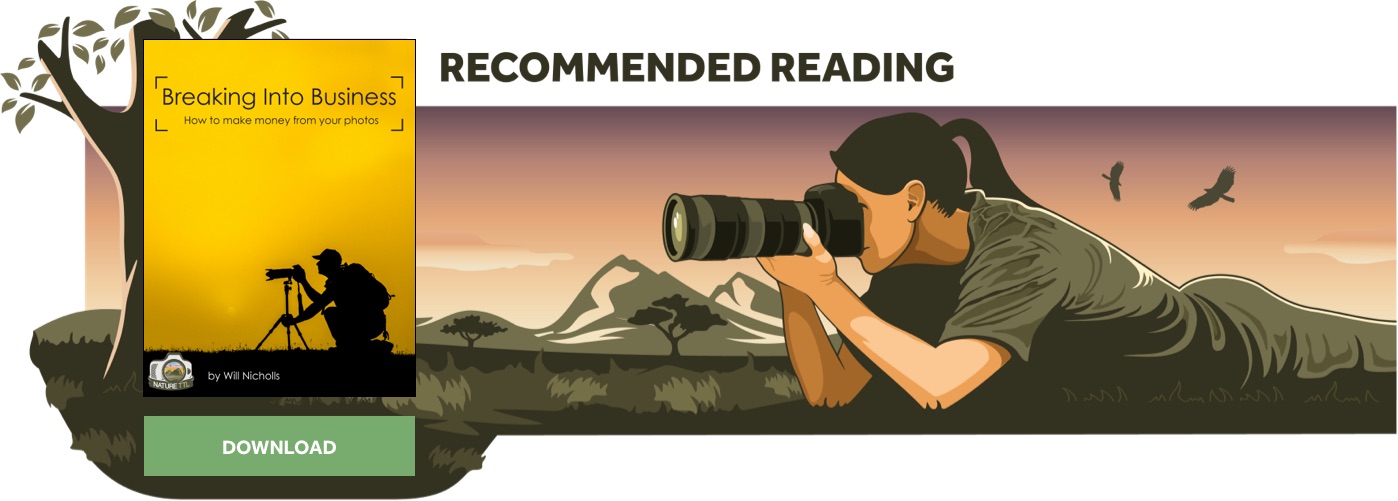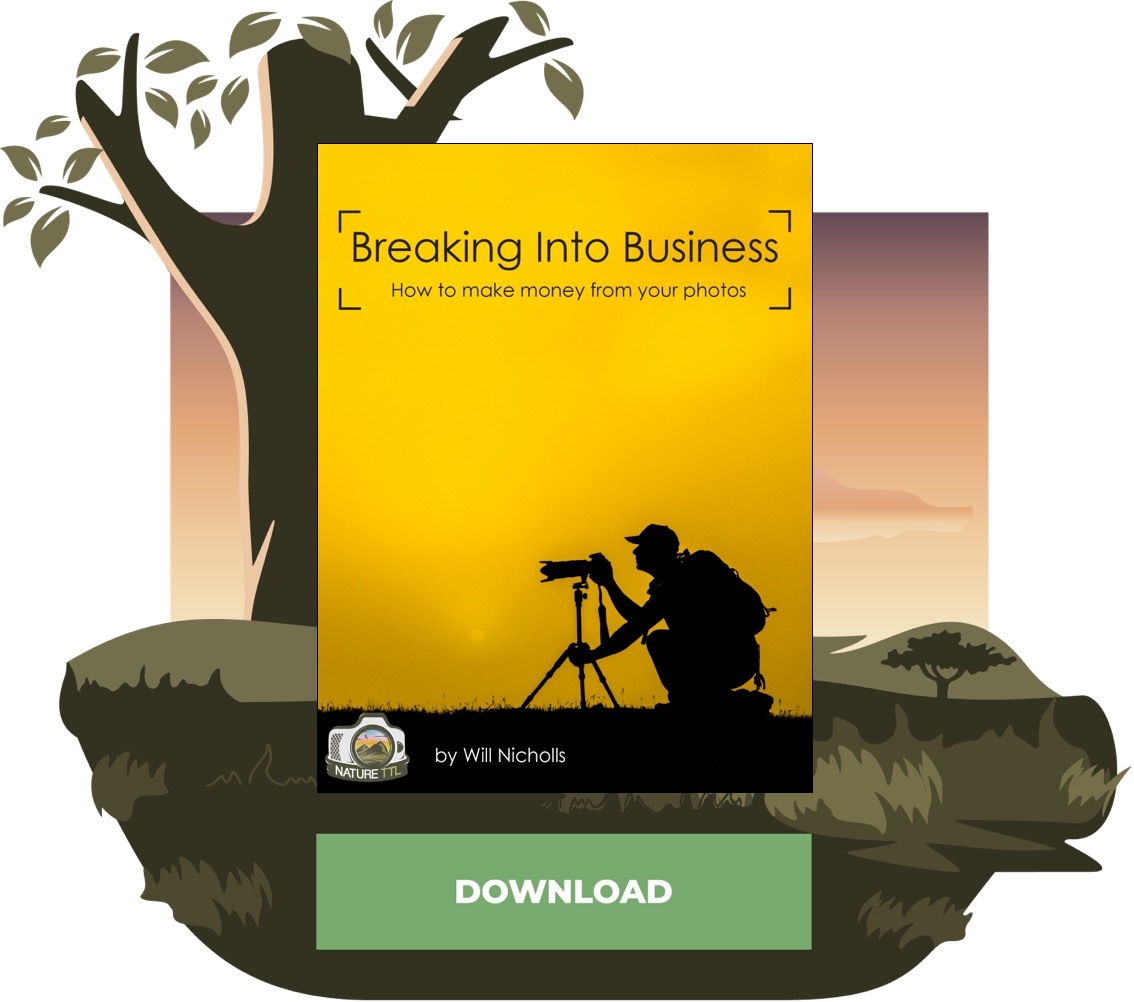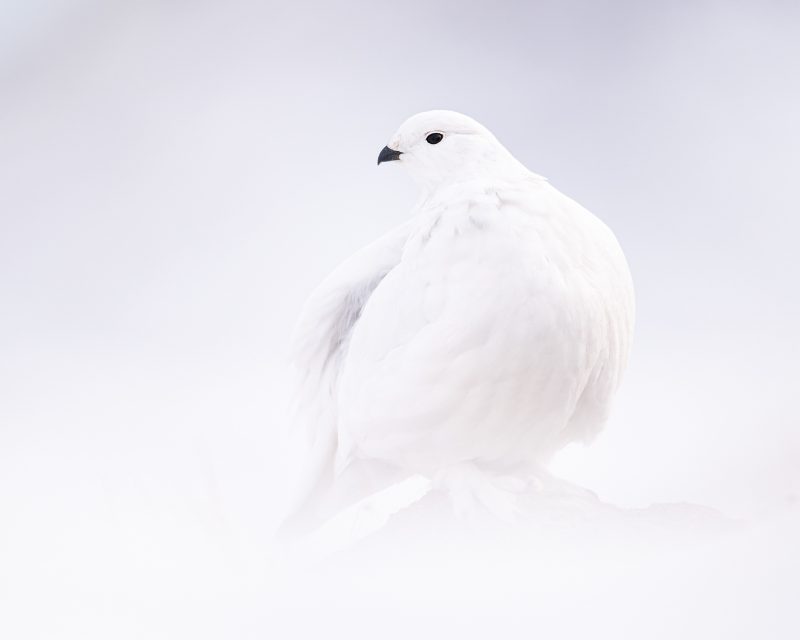Peter Ismert: The Key to Compelling Wildlife Photography

Award-winning conservation photographer Peter Ismert joins us to talk about his journey in photography, essential photo skills, inspiration, and so much more!
Pairing his background in environmental sciences with a keen eye, Peter is able to masterfully capture beautiful and candid moments that intimately showcase wildlife and the habitats these animals call home.


Through his photography, Peter works to promote community-based environmental protection and shares conservations stories of the natural world around us.
When did you first get started in wildlife photography?
My first African photo safari to Kenya in 2012 really inspired me to explore wildlife photography. Before that, I was more of a landscape photographer as it fit my outdoor pursuits in the Rocky Mountains.

For the past 10 years, I used my landscape photography background to help shape and evolve my wildlife photography.
With a background working in conservation and organizations like the Environmental Protection Agency, how do you feel this impacted the trajectory of your photography?
My long-term career in water quality protection and watershed restoration has been the backdrop to my personal growth as a wildlife photographer. Photography, like all art forms, reflects one’s life experiences.
Although my environmental career is separate from my photography, it has provided me with insight to pursue unique perspectives in nature.
Working in an environmental field keeps my mind focused on the environmental conditions that help me develop my photography vision.

My experiences constantly make me aware of the issues with protecting and restoring the natural world. This, in turn, has guided my wildlife photography, particularly in situations where wildlife or natural habitat is threatened or imperilled.
In addition, knowing about environmental issues has helped me pursue other directions in my photography. For example, I’m taking classes through a visual conservation storytelling academy to learn how to tell conservation stories with wildlife images.
I have a lot to learn, but it helps keep me motivated.
We love the beautiful candid moments that you capture between animals. What do you feel is a key skill needed to take animal behaviour images to the next level?
Thank you for the nice compliment.
Moving to the next level for animal behaviour requires imagining how a particular scene might change to reveal those unique candid moments, not just relying on what is presented in the current and often more traditional situation.
Previsualization of a scene or characteristic of an animal is the first step in moving beyond this situation. This sets up the photographer to bring all other variables together to maximize the chance of seeing unique behaviour.

There is nothing wrong with photographing animals in their normal relaxed state – it often results in beautiful portraits of animals. Adding some unique behaviour will change what is being communicated in the image and will significantly increase its interest.
To capture these moments, previsualization that starts even before setting out for a trip will help the photographer make the right choices to be able to see and photograph the unique behaviour.
How do you hope that people will interpret your images, and what do you hope they will feel when viewing your work?
I hope my images will bring people into the unique scene that I have photographed by communicating the natural character of the animal.
Animals are just like people, constantly assessing their current situation and planning their next activity. However, animals need to constantly think about daily survival.

I look forward to communicating these critical aspects of an animal’s life, whether it is a somewhat routine activity for survival or a more complicated and emotional decision made by the animal.
My goal is to show people the sophisticated emotions, characteristics, and decision-making of an animal so that people can further appreciate the species and support its protection.
In your opinion, how important is it that people connect on an emotional level with a photograph which has a conservation or environmental message?
With people seeing so many images on the internet, connecting on the emotional level is very important to help people remember your image and receive its message.
Connecting people to images is about trying to illustrate the past, present, and/or future of a particular scene, whether it is about wildlife, landscape, or both.

Wildlife images can illustrate the struggles that the animal has endured and show that it is at a decision point that will be important for it to survive to the next meal.
This helps people understand that wildlife species aren’t just objects in the natural world but are important living animals that have complex associations with the entire ecosystem.
A single image or a body of work sewn into a visual conservation story will hopefully express the value of all species and the natural world.
The goal is to encourage people to find ways to live with wildlife and not continue down the path of thinking wildlife is just something to be tamed or is just out there for our exploitation.
What is your favourite animal to photograph and why?
That’s always a fun question and it puts a smile on my face when thinking about the answer. It’s an answer that keeps changing as well. I’d like to describe two animals: one for my local photography outings and one for my far-flung travels.
Locally, with the grouse lekking season coming up, my favourite animal might be the greater sage-grouse. Grouse species have interesting and complex breeding-season rituals, and there are none like that of the greater sage-grouse.
They inhabit the vast sagebrush country of the American West, and, with a proper approach, it is fascinating to observe and photograph their ritual every spring.
The whole process of planning for the photo session, travelling to the site, preparing my gear, and quietly observing the grouse’s lek activities really attracts me to try to capture this unique display. I look forward to it every year!

For my travels, my favourite animal has recently been the African painted dog (aka, the African wild dog).
In recent trips to Zambia and Botswana, I’ve had guides and drivers who know this species well and know how to position photographers to capture their complex pack behaviours and entertaining activities.
It is such a wonderful species to even just see on safari, but then getting to photograph them from unique perspectives is always the highlight of the trip.
As a user of hides, do you have any tips for photographers who are yet to try shooting from a hide?
Hide photography opens new and exciting possibilities for photography. My advice is to build or buy a hide that would fit with the animals you intend to photograph.
For example, if photographing smaller animals that live on the ground, use a hide that has openings close to the bottom of the hide material.
This will allow the photographer to be on the same level as the animal, which will produce better images than looking down on the animal.
Also, there is a sweet spot for the size of the hide and comfort. I like to use the smallest hide possible for the situation, especially if it is obvious in the landscape.

This seems to be less intrusive to the animals and is just easier to pack and carry. However, smaller hides are often cramped inside and not as comfortable for long periods. Looking at these trade-offs will help decide the type and size of hide to use.
Many species have predictable habits which will help you choose your hide location. Learn the preferred habitats of your target species and apply that to your location.
Animal tracks, droppings, evidence of feeding, trail usage, and many other animal signs will help you decide where to place the hide.
If you have a hide that has only one camera opening that is higher up, but you still want to photograph from a low perspective, you can place the hide at a low point. For example, a small depression or low on a hillslope puts you closer to eye level with the animals.
Once you select your general area, set up the hide at a spot to ensure you will get your desired lighting effect, that being either front, side, or backlighting.
Lastly, since you have the luxury of choosing the perfect location, pay particular attention to what will be your background in your photos.
Either look for a soft, non-distracting background that will help your subject stand out in the final image, or include the landscape to show its habitat in a beautiful and interesting fashion.
Do you have a favourite moment behind the lens?
Well, since I talked about the African-painted dog, I’m thinking it might be an experience I had in 2021 in the Okavango Delta area of Botswana.
Our local guides were very experienced in tracking and watching packs of painted dogs. On one of our first days on safari, they positioned the safari vehicle a safe distance from a den site, not knowing if the dogs were around or in the den.
Within 10 minutes some of the adults came back from a hunt and up to 10 puppies poured out of the den! It was an incredible experience to witness the subsequent feeding and socializing between the adults and puppies.
We captured so many images that told the story of how the pack takes care of all its members and coordinates all its energy to ensure its survival.
Are there ever moments when you feel stuck or uninspired in photography, and how do you overcome these feelings?
Yes, I often get the feeling of not wanting to go out with my camera, especially to my local photography locations. I get the feeling of “I’ve been there and done that”.
Two things help me bring back the inspiration.
First, I try to put my mind into the frame of creating more artistic images of the subjects that I frequently photograph.
I only compare my work to myself and try to improve on the artistic rendition of these subjects that I know well.

Secondly, I might change the purpose and goals of my photography, which helps break through that photographer’s block.
As I mentioned earlier, my new goal is to learn how to photograph for the creation of visual conservation stories that can be used to protect species and habitats. This has helped add a new purpose to my photography and inspires me to make new bodies of work.
Another option would be to perhaps photograph with the intention of creating a product that you haven’t done before, like a photo book, calendar, greeting card, advertising material, or even to complement scientific literature in journals or magazines.
The options are endless for how photographs can be used. Choosing a new approach or purpose will help kickstart a new creative outlet for yourself.
As a winner of several photography awards, do you have any advice for photographers looking to enter their first competition?
Photography competitions are fun and worthy pursuits to help you stay motivated and inspired to improve your work. Although one should only compare their work to themselves and not to other people, competitions don’t necessarily fit that paradigm.
People should approach competitions with the mindset of using them as an opportunity to measure and improve their work. Frustrations often set in with competitions, as has done with me many, many times.

If photographers are mindful of making improvements in their photography and are persistent at entering competitions, slowly they will begin to see results.
Another piece of advice involves selecting which images to enter into competitions.
Every photographer struggles with this but gets better as time goes on. I look for images to enter that might have an initial impact on the judge, and then have secondary characteristics that keep the judge interested and wanting to linger.
There are a lot of resources available to help people create impactful images, but when looking at your existing images, try to view them from a subjective mindset, as if you have never seen them before, to find the ones that have the greatest impact.
For wildlife photography, the images that I think do best are those that communicate emotion, character, mystery, excitement, or intrigue from the subject.
Then I find they have secondary aspects that spark curiosity, imagination, and wonderment, and instil a desire for the viewer to be in the scene.
Finally, people new to competitions can use competitions from their local or regional photography organizations to “test the waters” to see where they are at with competitions.
This will help decide if competitions are right for you and help to identify the types of images that might do well with judges for national and international competitions. Just remember, in the end, the best photos are your favourite photos, that’s what it is all about.
In today’s busy world, where many people like you hold full-time jobs whilst pursuing photography on the side, how do you manage to carve out enough time to dedicate to your photography?
That is a question that I often get asked.
My standard answer is that I use my leave time from my full-time job strategically and take advantage of holidays.
I also routinely take photos close to home after my normal work hours, particularly when the days are long. I have plenty of easy access to wild places either in the mountains or on the plains to photograph animals after work in the late evening light.
However, there is more to it than that.
An important aspect is to focus my limited photography time on the best possible opportunities to make impactful images for my predetermined goals.
For example, if the subject I want to photograph needs to be portrayed in a certain light or under specific weather conditions, I won’t travel to a site if that isn’t happening, opting instead to save my leave time for when the conditions are ripe.
This makes it seem like I travel a lot more than what would be practical for my situation. Of course, this helps when I have some leave flexibility with my job.
Lastly, my wife is also interested in photography, so we take trips together that offer both a wilderness experience and allow for success in photography for both of us.





